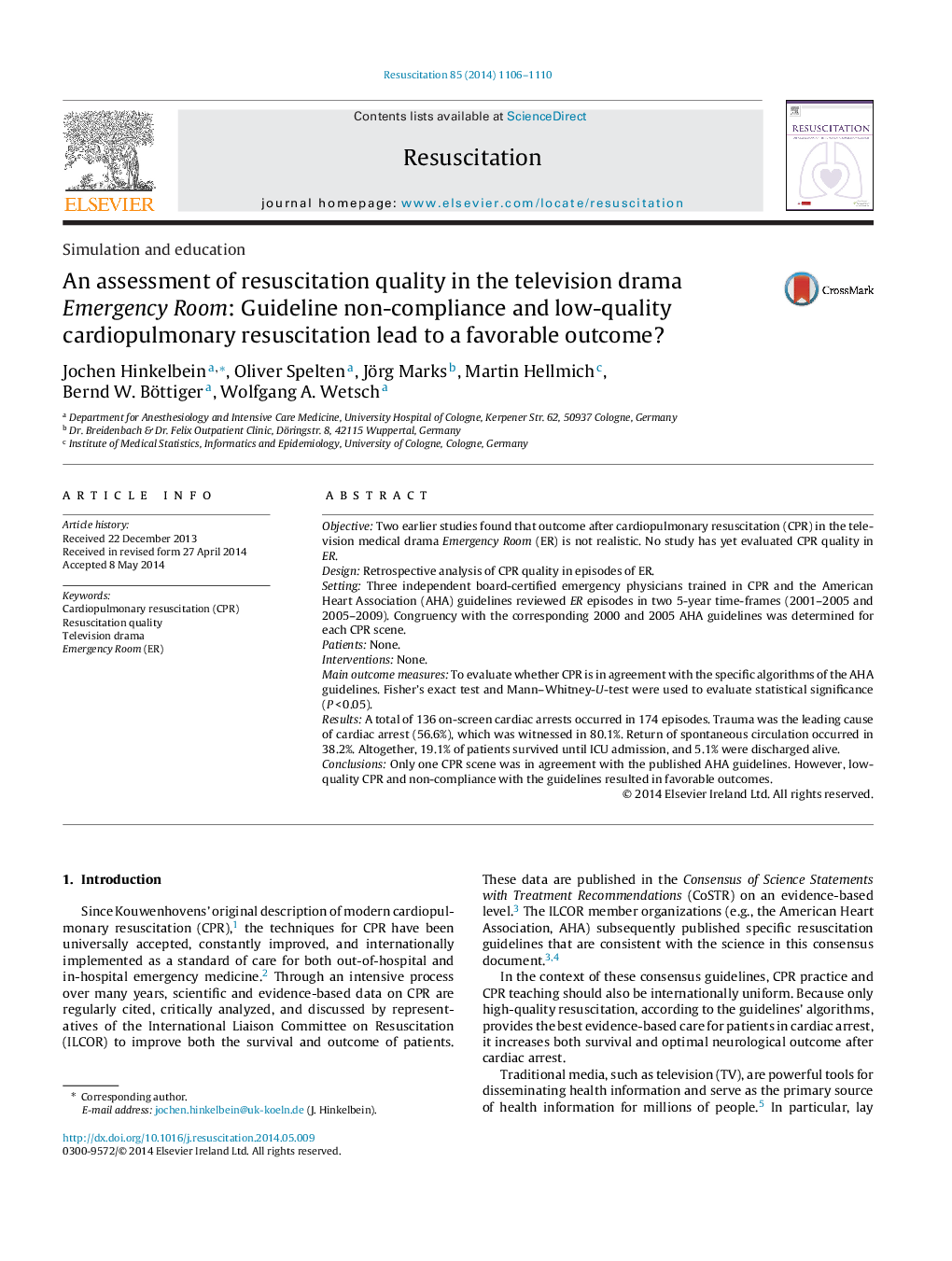| Article ID | Journal | Published Year | Pages | File Type |
|---|---|---|---|---|
| 5998124 | Resuscitation | 2014 | 5 Pages |
ObjectiveTwo earlier studies found that outcome after cardiopulmonary resuscitation (CPR) in the television medical drama Emergency Room (ER) is not realistic. No study has yet evaluated CPR quality in ER.DesignRetrospective analysis of CPR quality in episodes of ER.SettingThree independent board-certified emergency physicians trained in CPR and the American Heart Association (AHA) guidelines reviewed ER episodes in two 5-year time-frames (2001-2005 and 2005-2009). Congruency with the corresponding 2000 and 2005 AHA guidelines was determined for each CPR scene.PatientsNone.InterventionsNone.Main outcome measuresTo evaluate whether CPR is in agreement with the specific algorithms of the AHA guidelines. Fisher's exact test and Mann-Whitney-U-test were used to evaluate statistical significance (PÂ <Â 0.05).ResultsA total of 136 on-screen cardiac arrests occurred in 174 episodes. Trauma was the leading cause of cardiac arrest (56.6%), which was witnessed in 80.1%. Return of spontaneous circulation occurred in 38.2%. Altogether, 19.1% of patients survived until ICU admission, and 5.1% were discharged alive.ConclusionsOnly one CPR scene was in agreement with the published AHA guidelines. However, low-quality CPR and non-compliance with the guidelines resulted in favorable outcomes.
